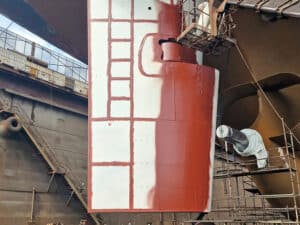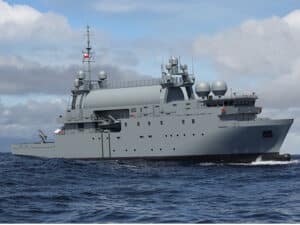
Canada starts ECA, MARPOL Annex VI enforcement
Written by Nick Blenkey MAY 13, 2013 — Canada has started enforcement of the North American Emission Control Area (ECA) standards and the requirements of Annex VI of the MARPOL convention.
MAY 13, 2013 — Canada has started enforcement of the North American Emission Control Area (ECA) standards and the requirements of Annex VI of the MARPOL convention.
The announcement was made last week in Halifax, Nova Scotia, where Canadian Transport Minister Denis Lebel was joined by Greg Wirtz, president, Cruise Lines International Association – North West and Canada, and Karen Oldfield, President and CEO, Halifax Port Authority.
Minister Lebel
“The changes we are announcing today will help make our oceans and lakes cleaner by reducing ship emissions,” said Minister Lebel. “Since vessels from Canada and the United States routinely travel in both countries’ waters, aligning our regulations is the logical thing to do.”
“The cruise lines operating in Canada are leaders in environmentally sustainable practices, and meet or outperform all applicable international and federal air emissions requirements wherever we operate,” said Mr. Wirtz. “The cruise industry continues to invest in new technologies to reduce air emissions, including exhaust gas scrubbers, shore power in ports and vessel efficiency measures. We recognize that these new regulations contribute to the Canadian government’s efforts to further improve Canada’s air quality.”
“The regulatory changes announced today are the result of much consultation on how we can better protect Canada’s clean air and waterways,” said Ms. Oldfield. “Here at the Port of Halifax, we’re making progress with projects such as cruise shore power and our port environmental management system, which was the first in Canada to achieve an ISO 14001 certification in 2005.”
“Protecting our air and waterways from all ship-source pollution, including greenhouse gas emissions is a priority that our government takes very seriously,” added Minister Lebel. “We are making progress on our Copenhagen commitment to reduce our greenhouse gas emissions by 17 percent by 2020. Canada is now halfway towards meeting this target.”
North American ECA
The North American ECA regulations apply to ships of 400 GT and above navigating in designated coastal waters under the jurisdictions of Canada, the United States and France (for Saint-Pierre and Miquelon) south of 60° north latitude. The air emissions standards set an initial 1 percent limit on content of marine fuel, followed by a 0.1 per cent limit that will come into effect in 2015. It also sets standards that lower nitrogen oxide emissions for vessels transiting these waters.
MARPOL Annex VI
In accordance with MARPOL Annex VI, new standards to reduce emissions of key air pollutants from Canadian vessels operating overseas are coming into force. These standards will reduce ship-source emissions of sulfur oxide by 96 percent and nitrogen oxides by 80 percent by 2020. They lapply to vessels of 400 gross tonnage (GT) and above, except for domestic vessels that voyage only in Canadian waters.
Vessels of 400 GT and above that built after June 30, 2013, must meet new energy efficiency standards that will reduce carbon dioxide emissions by 30 percent by 2025. This does not apply to domestic vessels voyaging only in Canadian waters. The amended regulations also require new and existing vessels of 400 gt and above to have plans on board stating how each vessel will increase energy efficiency and reduce greenhouse gas emissions.
Great Lakes and St. Lawrence
A new air emissions regime for Canadian vessels operating in the Great Lakes and St. Lawrence uses “fleet averaging,” allowing compliance with the new emissions requirements to be determined by a firm’s fleet overall. Between 2013 and 2020, the standard will progressively reduce allowable sulphur dioxide emissions until they match those of the ECA. By 2020, individual vessels will be required to meet the sulphur limits.
Gray water
Under the amendments, gray water (drainage from vessels’ sinks, laundries and kitchens) discharged Canadian waters (other than Arctic waters, which are subject to other standards) must not result in the deposit of solids or cause any sheen on the water. In addition, new vessels carrying more than 500 passengers must treat graywater before discharging it, or store it in holding tanks before discharging it at least three nautical miles from shore.
Smaller marine diesel engines
New standards will require smaller new marine diesel engines installed after January 1, 2016, to be certified to meet either the United States “Category 2” standards, or an equivalent international standard.
Improving transfer of oil between tankers at sea
These changes will align Canadian requirements to updated IMO standards to prevent marine pollution, by requiring oil tankers of 150 GT or more to carry plans on board for ship-to-ship oil transfer operations at sea. They will also be required to give advance notice of transfer operations.





Leave a Reply
You must be logged in to post a comment.